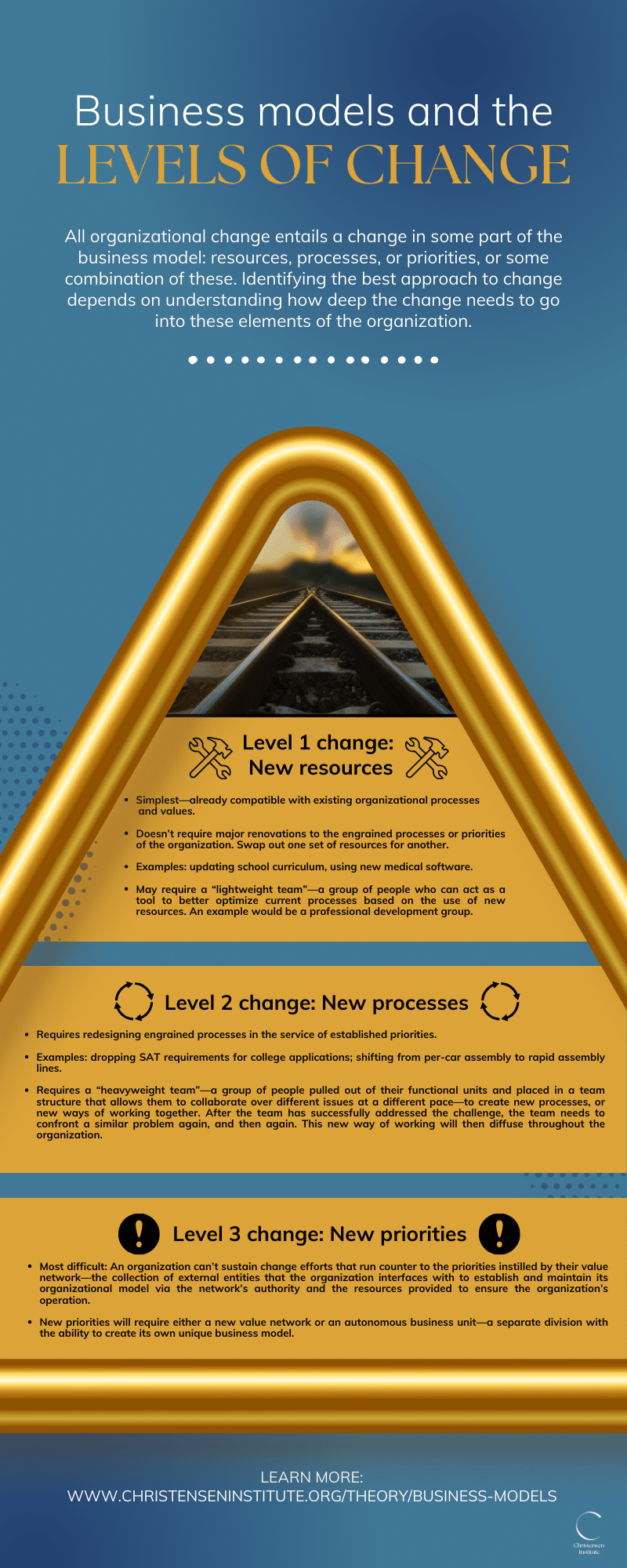Infographic: Business models and the levels of change
All organizational change entails a change in some part of the business model: resources, processes, or priorities, or some combination of these. Identifying the best approach to change depends on understanding how deep the change needs to go into these elements of the organization.
Level 1 change: New resources
- Simplest—already compatible with existing organizational processes and values.
- Doesn’t require major renovations to the engrained processes or priorities of the organization. Swap out one set of resources for another.
- Examples: updating school curriculum, using new medical software.
- May require a “lightweight team”—a group of people who can act as a tool to better optimize current processes based on the use of new resources. An example would be a professional development group.
Level 2 change: New processes
- Requires redesigning engrained processes in the service of established priorities.
- Examples: dropping SAT requirements for college applications; shifting from per-car assembly to rapid assembly lines.
- Requires a “heavyweight team”—a group of people pulled out of their functional units and placed in a team structure that allows them to collaborate over different issues at a different pace—to create new processes, or new ways of working together. After the team has successfully addressed the challenge, the team needs to confront a similar problem again, and then again. This new way of working will then diffuse throughout the organization.
Level 3 change: New priorities
- Most difficult: An organization can’t sustain change efforts that run counter to the priorities instilled by their value network—the collection of external entities that the organization interfaces with to establish and maintain its organizational model via the network’s authority and the resources provided to ensure the organization’s operation.
- New priorities will require either a new value network or an autonomous business unit—a separate division with the ability to create its own unique business model.
Learn more: www.christenseninstitute.org/theory/business-models


